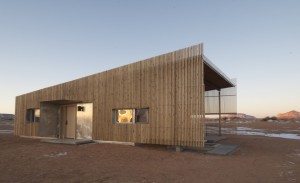- Products
- Industries
- Project Gallery
- Resource Center
- Metal Institute
- Shop
- Contact Us
March 13, 2014
by William H. Dodge
As the design and construction industry moves forward and we all (product manufacturers, designers, and clients alike) start to seriously consider the ideas of legitimate “differentiation” (among our peers, designs, and products) the ideas of multi-industry collaboration and mass customization come to mind…

Should we decide to go down this road, there are most definitely very real challenges that await: raw material costs, set-up and tooling charges, time/schedule and testing for starters. Then there’s the seemingly insurmountable challenge of multi-company and multidisciplinary coordination… At company A) “x” means one thing, while at company B) “x” means the exact opposite… How do we ensure that our products/designs/buildings don’t in a sense have two left feet after navigating this process? At the end of the day, however, should we rise to the challenge and navigate these obstacles successfully, the pay-off will be enormous. Below are a few key ways to make this happen.
START COLLABORATING FROM THE BEGINNING
Secretly, many architectural designers fancy themselves as inventors of sorts (I know that I did/still do). They are often times quite literally creating something out of seemingly thin air in order to correspond with the client’s/owner’s hopes and dreams. The only problem is when you run out of time, money or needed/interesting “building blocks”.
Earlier this year, I was approached by a senior-level principle of a world leading design firm, regarding the possibility of partnering up with MBCI in order to bring new products to market. The basic gist of the conversation was: “We have the design know-how and experience, while you guys [MBCI] have the manufacturing and testing experience. Why not partner up and bring new stuff to the market that no one else ever possibly could?” Why not indeed? Currently that is a topic that is still on the table. It is through conversations like these that true progress is really made, and I am greatly encouraged by the future of this relationship.
EMBRACE IGNORANCE AND NAIVETY
In order to move forward we must each take risks, we must look to the future as a real opportunity for change and we must embrace both ignorance and naivety for it is by only not knowing one’s “limitations” and what is (and what is not) currently “possible”, that innovation can occur.
While in graduate school at NC State, I was fortunate enough to have had more than my share of inspirational conversations with some of the world’s finest architectural and design minds, not the least of which was one particular discussion with Michael Rotondi of RoTo Architects. “I look for design inspiration in everyday life, but most importantly from my thirteen year old son and my interns. I’m too set in my ways to ever think about things much differently than I already do, but by keeping an open mind, I am always exposed to a fresh perspective.” How many of us out there are open to such a philosophy? How many of us could benefit from such a strategy? I would be willing to bet nearly everyone (and every industry).
GET INVOLVED WITH SCHOOLS
Embrace the enthusiasm of people eager to learn. Architecture/Design School is many things, but it is most assuredly anything but easy. Mental toughness and the ability to solve complex problems quickly are unspoken but very real prerequisites for graduation. Most disciplines have tests with one “right” answer. Design education takes a drastically different approach. There are quite literally countless “right” answers to the same exact problem. If you put one hundred designers in a room and ask them each for a solution to the same exact design problem you will get one hundred different answers. There are legitimate reasons for each of these answers, and throughout their education students are continuously thrust into this situation. Students must not only provide their answer but must also present their solution to a jury of their peers, professors and practitioners. This is their test… This process helps to create the strongest of work ethics (no one ever wants to be embarrassed repeatedly in a room full of their colleagues/friends), the ability to take constructive (and sometimes unconstructive) criticism, the ability to think on their feet (you can never know what they’ll ask or focus on), as well as the ability to not only come up with creative solutions but also to SELL them. Any company looking to innovate can benefit tremendously from their share of employees with this background and experience. Why not start that process earlier with direct relationships with the schools/students themselves? I challenge any company or industry to consider this approach. I can promise you that you will see tremendous results.
I am very proud of MBCI’s commitment to this ideal and to have had the opportunity to have worked with many such students during the past year. I am even more proud of MBCI’s contributions of both time and materials to two design-build studios (North Carolina State and CU Denver) this past summer as both of those projects are not only beautiful, but also support great causes (see links below). As great as these two particular projects are, I am hopeful that they are only the beginning and that we will continue to seek out and respond to similar opportunities in the future.
North Carolina State University: Floating Lab project for Durham Public Schools
About Durham Public Schools HUB Farm: http://www.dpsnc.net/programs-services/cte/hub-farm
Project: http://design.ncsu.edu/designlife/2014/02/11/and-make-it-float/
University of Colorado Denver: HOZHO House, DesignBuildBLUFF
About DesignBuildBLUFF: http://www.designbuildbluff.org/?q=node/31
Project: http://www.designbuildbluff.org/blog/?cat=131